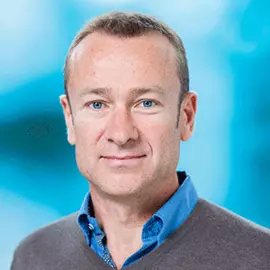Data mining in neurological medicine
Pattern recognition algorithms
Beschreibung
Restless legs syndrome (RLS, Willis-Ekbom disease) is a neurological movement disorder characterised by motor and sensory symptoms, such as the uncontrollable need to move the legs (and sometimes also the arms). Such need is associated with an unpleasant and disturbing sensation in the lower limbs that typically worsens during rest and that can be partially or totally relieved by voluntary or involuntary movement. Thus, sleep disturbance becomes of paramount significance to RLS patients. Indeed, severe RLS produces the most extreme chronic sleep loss among all known sleep disorders, with obvious dramatic consequences for normal day-time functions of the human body. Moreover, RLS is frequently associated with other sleep disorders (e.g., PLMS, insomnia) resulting in daytime fatigue and a significant deterioration of the quality of life. Although no large-scale studies are available, it is estimated that 7 to 15% of the adult population presents symptoms compatible with RLS, and 20-40% of these patients report significant impairment of life quality. Typically, the prevalence of RLS increases with age, but each segment of the population (including children and the elderly) may present symptoms and genetically transmitted forms of the syndrome tend to have greater clinical severity and early onset. In spite of the dramatic consequences that the RLS can have on people’s life quality, this syndrome is often underestimated and under-diagnosed.In the past, there has already been a collaboration between Dr. Massimo Maiolo (ex-SUPSI, now ZHAW, IAS), Prof. Danani (ex-SUPSI, now IDSIA Institute for Artificial Intelligence Research) and Dr. med. Manconi (Neurocenter of the Civic Hospital of Lugano, Inselspital Bern, Lugano Master School of Medicine). The collaboration led to the development of a prototype program for the calculation of synchronisation parameters between the two brain hemispheres on a patient affected by hydrocephalus. We are planning now a new collaboration with all the partners mentioned above aiming at developing suitable data mining algorithms to investigate not-yet-understood RLS features. In particular, the goal is to better describe the interaction/synchronization between the 3 different systems involved in RLS, that is, nervous central-, cardiovascular- and motor systems. The method and data processing protocol developed in the first phase of the collaboration by Dr. Massimo Maiolo will play a central role, since we are planning to adapt parts of them to suit the new application (RLS) in a new high-performance computing framework. The kick-off funding would cover a preliminary implementation and performance evaluation, on real medical/neurological data, of the algorithms that will be applied to RLS polysomnography time-series (i.e., sleep-time time-series of brain waves, blood oxygen levels, heart and breathing rates, eye and legs movements). These time-series are very large and highly multi-dimensional data sets, which make data mining computationally extremely expensive. It is therefore essential to adequately integrate the new algorithms in a HPC framework, which would be conveniently provided by our HPC facility in Wädenswil. The long-term goal of the collaboration is to obtain funding in the context of a SNF project. The partners mentioned above, Prof. Danani and Dr. med. Manconi, renowned and well-known experts in their fields, are confident that our chances to obtain such funding are high. Therefore, as a part of this kick-off project we would draft a project proposal that will then be submitted to the SNF in 2020. The methods that we are planning to explore and apply are very general and suitable for a broad range of potential applications in a variety of physical and life sciences. The project will give us the opportunity to significantly enhance our experience with signal analysis, data mining and machine learning. Many activities at the Institute of Applied Simulations could greatly benefit from this enriched expertise. Time-series analysis and data mining methods are hot topics in the broad research field of Big Data. Moreover, the methods that we are planning to apply rely very heavily on cluster and parallel computing (HPC). This project will therefore be a very exciting opportunity to exploit the power of the newly established HPC facility of the ZHAW in Wädenswil and strengthen our know-how in high-performance computing, code parallelisation and software optimisation for cluster applications.
Eckdaten
Projektleitung
Projektteam
Dr. Anna Castelnovo, Prof. Dr. Andrea Danani, Massimo Maiolo, Prof. Dr. Mauro Manconi
Projektpartner
Scuola universitaria professionale della Svizzera italiana SUPSI / Dipartimento tecnologie innovative; Ente Ospedaliero Cantonale EOC / Neurocentro
Projektstatus
abgeschlossen, 09/2019 - 04/2020
Institut/Zentrum
Institut für Computational Life Sciences (ICLS)
Drittmittelgeber
Interne Förderung
Projektvolumen
28'000 CHF
